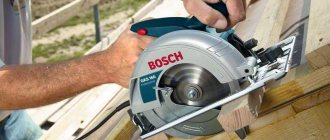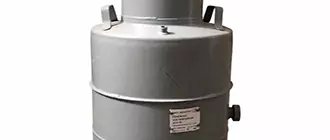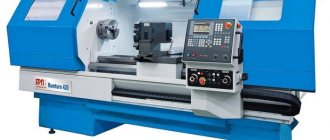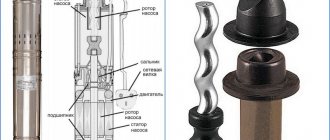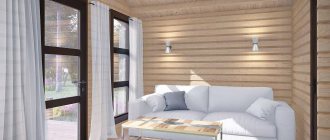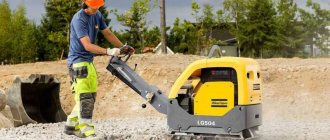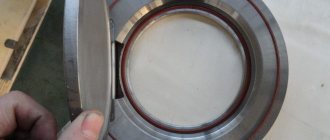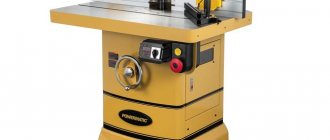There are many types of saws used in woodworking and other industries. Where it is necessary to give a board a certain shape, to make a precise or shaped cut, a home tool will not cope with this task. You need a band saw whose design allows you to make a wide variety of cuts.
What is a band saw?
We are talking about a multi-cutting tool, the main working element of which is a steel band closed in a ring, equipped with sharp teeth along one edge. A band saw is a machine that first appeared in England at the beginning of the 19th century, but only towards the end of the century did such equipment become widespread. This is due to the fact that in those days it was not possible to accurately connect the ends of the steel strip. Today, welding is used for this, and band saws have spread throughout the world, although France continues to hold the lead in their production.
Band saw device
The main component of this carpentry equipment is the work table. It is used to process workpieces made of wood, stone, metal and other materials. The belt itself is installed on two machine pulleys rotated by an electric motor. A band saw for wood also has a load-bearing part - a bed frame, designed to support the large weight and dimensions of the entire device. It is made of metal, although wood is also used for medium and small saws.
The frame is additionally reinforced with bars, screws, and glue. The upper pulley block is responsible for tensioning the webs. The inner part of the frame is equipped with a wheel shaft, and a special screw mechanism is responsible for vertical movement along the guide. It must be said that the saw can be either horizontal or vertical with an excellent location for its pulleys.
Working principle of a band saw
There are models of industrial machines that operate on a three-phase network - 380 V, and some can be connected to a single-phase network - 220 V. The principle of operation of a band saw is as follows: the selected metal strip is put on two pulleys. When one of them is turned on, the blade begins to move and thus the material being processed is cut. A manual band saw machine cuts material that is constantly fed into the cutting zone at a certain speed. The process is controlled by a master who monitors the correct execution of the task.
Types of band saws
As already mentioned, they can be:
- horizontal;
- vertical.
Such equipment is divided into manual, semi-automatic and automatic. In addition, there are three types of band saw for wood:
- Serrated
. The model with teeth is widely used for processing wood and metal, and it is also used for cutting mineral wool, foam concrete and even food products - meat, fish. - Toothless friction saw
. Its metal belt is also equipped with teeth, but their purpose is to increase the generation of heat during friction and thereby increase the productivity of all equipment. - Electric spark band saw
. Its use is advisable in one case and it concerns the processing of workpieces whose thickness exceeds 15 mm. Conventional circular saws with electric spark action cannot cope with them due to large runout, significant diameter and pitch, which is why a band unit is used.
A variety of blades can be used on the same machine - both special and for specific types of workpieces. The scope of application of a cutting tool depends on the pitch of the teeth, that is, their size, the hardness of the edges, their geometry and setting. For example, for processing large workpieces, a blade with large serrations is selected, and for cutting products made from tool steel, increased tooth hardness is required. Their backs are reinforced if the process is accompanied by strong vibration and impact.
Saw pitch size for cutting profiles and pipes
| Wall S, mm | Outer diameter D, mm | ||||||||||
| 20 | 40 | 60 | 80 | 100 | 120 | 150 | 200 | 300 | 500 | ||
| 2 | 14 | 14 | 14 | 14 | 14 | 14 | 10/14 | 10/14 | 8/12 | 6/10 | |
| 3 | 14 | 14 | 14 | 10/14 | 10/14 | 10/14 | 8/12 | 8/12 | 6/10 | 5/8 | |
| 4 | 10/14 | 10/14 | 10/14 | 8/12 | 8/12 | 8/12 | 6/10 | 6/10 | 5/8 | 4/6 | |
| 5 | 10/14 | 8/ 12 | 8/ 12 | 8/ 12 | 6/10 | 6/10 | 5/8 | 5/8 | 4/6 | 4/6 | |
| 6 | 8/12 | 8/ 12 | 6/ 10 | 6/10 | 5/8 | 5/8 | 5/8 | 5/8 | 4/6 | 3/4 | |
| 8 | 8/12 | 6/10 | 6/ 10 | 6/ 10 | 5/8 | 5/8 | 5/8 | 5/8 | 4/6 | 3/4 | |
| 10 | 6/10 | 5/8 | 5/8 | 5/8 | 5/8 | 4/6 | 4/6 | 3/4 | 3/4 | ||
| 12 | 5/8 | 5/8 | 5/8 | 4/6 | 4/6 | 4/6 | 3/4 | 3/4 | 3/4 | ||
| 15 | 5/8 | 5/8 | 4/6 | 4/6 | 4/6 | 4/6 | 3/4 | 2/3 | 2/3 | ||
| 20 | 4/6 | 4/6 | 4/6 | 3/4 | 3/4 | 2/3 | 2/3 | 2/3 | |||
| 30 | 3/4 | 3/4 | 3/4 | 3/4 | 2/3 | 2/3 | 2/3 | ||||
| 50 | 2/3 | 2/3 | 2/3 | 2/3 | |||||||
When cutting pipes lying next to each other, use values with double the wall thickness
How to choose a band saw?
The first and most important criterion that determines the choice is the type of material being processed. If you plan to cut steel, then you need a metal band saw. In addition, such equipment is divided into household, semi-professional and professional. A hand-held band saw of small dimensions and weight is ideal for working at home. With its help, the master will be able to make various furniture, cut blanks, etc.
The middle class of saws can be used both in the home workshop and in the workshop, but professional machines are suitable only for industrial production. Having decided on the class, you can proceed to choosing the main technical characteristics:
- Depth of cut. This parameter determines the maximum thickness of the workpiece.
- Width of cut. This value shows the maximum width the workpiece can have.
- Maximum workpiece diameter.
Band saw rating
Popular models include:
- Jet Band Saw
. Processes workpieces up to 300 mm wide. Its power is enough to cut wood from a wide variety of species - ash, beech and others. It is easy to place the necessary parts on a thick metal frame; it does not deform from high vibration and loads. - Band saw Anchor Corvette
. This unit is more suitable for industrial production. Its power is 1000 W, and the cutting blade moves at a speed of 900 m per minute, allowing you to cut workpieces from a wide variety of materials. - Bosch band saw
. This company produces both machine tools and hand tools that run on batteries. The latter can be taken with you and used for cutting pipes, angles, rods and other parts. You can work with such a tool in all positions; it is compact, convenient and easy to operate.
How to determine the quality of the canvas?
The correct choice of saw blade determines the service life of this important part. Therefore, you need to choose a blade that is suitable for the type of work you want to do with your bandsaw. The best steel for cutting blades is alloyed or carbon.
But a saw made from an alloy of two high-strength metals, which is characterized by increased strength and excellent cutting qualities, has also become popular. The higher the number of teeth per inch, the more accurate the cut will be. The optimal quantity is usually taken to be 8 teeth per inch. The width of the edge is not very important, but the blade will last longer if it is five times the height of the teeth.
Band saw blade
Cutting tools differ not only in the nature and arrangement of the teeth, but also in the material of manufacture. The saw blade for a band saw can be made from:
- Carbon steel
. Used for cutting wood. - Bimetal
. Often such blades are equipped with carbide teeth. This means that they are soldered with carbide. A blade fused from two metals is more popular, and all because the edges of its teeth are hard and the tape itself is flexible.
Any tape is made by cutting the material to size and welding its ends, followed by cleaning the seam. The cutting tool is welded using special equipment, which makes it possible to obtain an almost imperceptible joint that does not in any way affect the quality of the saw. On the same machine, you can use different types of blades, depending on the type of material being processed and the task facing the master.
The ability to independently saw wood or metal into finished workpieces forces many zealous owners to acquire special bandsaw machines. However, for high-quality cutting, it is not enough to buy and install a ribbon. It is also necessary to select high-quality band saws, learn how to cut and sharpen them. Only then will the cutting line be smooth, the workpiece will come out of the machine with clearly defined dimensions, and losses during sawing will be minimal.
Content
- Band saws for woodworking
- Band saws for metal work
- Features of sharpening band saws
- Editing and sharpening a band saw video
- Benefits of cutting with a band saw
- Compact band saws for private households
- Makita band saw. We cut along! Video
Band saws for woodworking
Band saws for wood are used as a cutting blade in horizontal sawing machines such as “Kedr”, “Taiga”, “Altai”, “Master” and many others.
Most often they are used for primary sawing of round timber, dividing the wood into finished edged lumber. The use of band saws is very economical, since the thickness of the cut is from 1.5 to 2.5 mm, which is an order of magnitude less than that of circular saws. With proper sharpening and setting of the teeth at the right angle, a band saw can be used to cut wood even in severe frosts, without fear of “waves” and defects.
Band saws for metal work
Special band saw machines are used for processing and cutting metal into blanks. The cutting tool in them is a metal band saw, which cuts raw materials into ready-to-use blanks. It is used for both figured cutting and straight cutting. Saws of this type can easily cut both cast iron and stainless steel, as well as products made from various hard alloys. In addition, metal band sawing machines are multifunctional and can be used to cut both foam plastic for insulation and plastic to the required sizes.
Features of sharpening band saws
Before sharpening the saw blades, you need to check the angle of their setting and make corrections if necessary. Wiring is necessary in the following cases:
- ·When switching to the winter/summer sawing period. Changing temperatures require different angles of the teeth.
- ·When sawing different types of wood.
- ·If the teeth are damaged and foreign objects get under the cutting part during sawing.
In these cases, wiring is simply necessary and can only be done on a special machine.
Band saws are sharpened daily. As a rule, saws are sharpened after each shift or as they become dull. Sawing with a dull saw can result in poor-quality cutting, so sharpening should be done on time.
To sharpen band saws, special machines with abrasive wheels or disks are used, which allow you to process one band saw blade in the shortest possible time.
Benefits of cutting with a band saw
They say that 90% of the success of high-quality sawing depends on proper routing and sharpening of the band saw, and if everything is done correctly, then the output can be up to 70% of the spent timber in finished products. This is why band saws are so popular in small businesses and private households. In addition, there are several more fat advantages in favor of cutting with a band saw:
- Low equipment installation costs. A massive foundation for the machine is not required and it is sufficient to place it on level rails;
- Possibility of sawing large diameter logs. Depending on the modification of the machine, the diameter of the logs can reach up to 1100 mm;
- Obtaining finished edged lumber without additional processing (CDK, multi-saw);
- Easy to operate and maintain the machine.
It is thanks to these advantages that a band saw has become a necessary attribute in a strong household, which allows you to save significant funds on the purchase of finished lumber. The main thing when purchasing a machine is to immediately select a supplier of band saws that will be distinguished by enviable quality and wear resistance. When choosing such a manufacturer, you should definitely study the technical characteristics of the band saw, reviews about it and review the requirements for sharpening equipment. Special attention should be paid to bilork band saws, which are made of high-quality alloy steel and can withstand many sharpenings.
During operation they do not tear for a very long time, and special lubrication and polishing of the blade allows it to be used in conditions of constant humidity without the risk of rusting. By the way, this option is quite economical, since the cost of a bilork saw is almost 25% lower than that of its analogues from other manufacturers.
Compact band saws for private households
There are situations when a large machine is simply not needed on the farm and spending money on it for rare cases of sawing is simply unreasonable. A Makita band saw was created especially for these cases, which weighs no more than 6 kg and can be used for cutting both wooden and metal workpieces. The size of sawn workpieces can reach up to 120mm in diameter.
Some modifications are equipped with autonomous power sources (batteries), which allow you to use the tool in hard-to-reach places without connecting to the network. It has a two-speed cutting adjustment and is convenient and easy to work with. This option is ideal for small volumes of work and narrow workpieces.
Author: Sergey and Svetlana Khudentsov
0
DIY band saw
There are many craftsmen who want to make a metal band saw with their own hands. Some people use an old bicycle for this, others use a jigsaw, but the simplest model can be made from plywood:
- Make a frame in the shape of the letter “C”.
- Assemble the table in which the lower pulley, motor and drive pulley will be located.
- Place the tabletop on the support and cut out future pulleys from chipboard. The larger their diameter, the better the saw will work.
- To make a lift that will ensure the movement of the movable block, you will need a block. It should be installed under the block and attached to the lever using a tight spring.
- When attaching the pulley, install the bearings necessary for installing and dismantling the wheels.
- A DIY band saw at home involves making guides on a small block. Their function can be performed by three roller-type bearings.
- Lubricate the unit and test it in action by putting a pre-purchased cutting blade on the pulleys.
Principle of operation
A belt machine is based on the use of an endless (closed) metal belt, with teeth cut on one side, as a working tool. Most often, bimetallic saws are used, in which the main part is made of durable steel (spring or similar in elasticity and strength), and the teeth are made of tool steel or particularly strong alloys.
The band saw is driven by pulleys, one of which (the lower one) is connected to an electric motor. The peculiarity of the movement of the saw towards the workpiece eliminates the ejection of sawdust or parts of the tape in the event of a break towards the operator. This determines the safety of the machine when cutting both flat sheets and complex rolled profiles.
Band saw machines are regulated by the speed of the belt, which is selected depending on the type of metal. The saws themselves are made with different tooth shapes, intertooth distances and sharpening angles. The design of most machines allows you to quickly change the saw blade if you need to switch to a different type of metal or rolled product.
Features of sharpening band saws
Any tool will sooner or later become dull, and the master will be faced with the question of sharpening it. It can be performed either manually or using special equipment. Sharpening band saws involves setting them, that is, restoring the profile of the cutting edge. There are three ways to set up a saw:
- Classic
. In this case, the teeth are deflected in turn to the right and left sides. - Cleaning
. With this method, the 1st and 2nd teeth are deflected in different directions, and the 3rd is left straight. This makes cutting even the hardest materials easier. - Wavy
. In this case, the edge is given a wave effect. A difficult option that can only be performed by professionals.
Band saw sharpening machine
There are many varieties of such units. First of all, they differ in the type of grinding wheels selected for a specific type of cutting blade. There is no one-size-fits-all saw that can handle any band, so before purchasing one, you need to make sure it fits the saw itself. A small cutting tool can also be sharpened with a needle file, but in industrial production conditions this option is unacceptable. The machine for sharpening band saws can be manual or automatic. In any case, it requires the use of coolant.
RECOMMENDED CUTTING CONDITIONS ON BAND SAW EQUIPMENT
| Workpiece material | Material designation | Cutting speed, m/min | Cooling | ||||
| DIN | GOST | Special | Bi-metal | Emulsion | Oil | ||
| Yes | No | ||||||
| Structural steels | St 35-St 42 | St 35-55 | 40-55 | 60-80 | 1:10 | X | |
| St 50-St 70 | 30-45 | 50-70 | 1:20 | X | |||
| Hardenable steels | C10-C15 | 45-65 | 60-90 | 1:10 | X | ||
| 14NiCr14 | 30-40 | 40-50 | 1:10 | X | |||
| 21 NiCrMo 2 | 30-45 | 45-55 | 1:10 | X | |||
| 16MnCr5 | 30-45 | 50-65 | 1:10 | X | |||
| Nitrided steels | 34 CrAI 6 | 20-35 | 1:20 | X | |||
| 34 CrAI Ni 7 | 20-35 | 1:20 | X | ||||
| Chrome steels | C 35-C 45 | 35-55 | 55-75 | 1:20 | X | ||
| 41 Cr4 | 40X | 25-35 | 40-60 | 1:20 | X | ||
| 40Mn4 | 40G | 35-45 | 50-65 | 1:20 | X | ||
| 42 CrMo 4 | 40 XM | 30-40 | 35-50 | 1:20 | X | ||
| 36 NiCr 6 | 40 HN | 30-40 | 50-60 | 1:20 | X | ||
| 24NiCr14 | 25-35 | 40-60 | 1:20 | X | |||
| Bearing steels | 100 Cr 6 | 25-35 | 50-65 | 1:30 | X | ||
| 105 Cr4 | ШХ 15 | 25-35 | 50-65 | 1:30 | X | ||
| 100 CrMo 6 | 20-30 | 40-50 | 1:30 | X | |||
| Spring steels | 65Si7 | 65 G | 30-40 | -100 | 1:30 | X | |
| 50 CrV 4 | 50HFA | 30-40 | 40-60 | 1:30 | X | ||
| High carbon tool steels | C80W1 | U8A | 25-35 | 40-55 | 1:30 | X | |
| C125W1 | 20-30 | 35-45 | 1:30 | X | |||
| C 105 W 2 | U10A | 25-35 | 40-50 | 1:30 | X | ||
| Alloyed | 105 Cr 5 | 30-40 | 50-60 | 1:30 | X | ||
| x210Cr12 | X12 | 20-35 | X | ||||
| x 40 CrMoV 51 | 4Х5МФС | 20-30 | 30-40 | 1:30 | X | ||
| x210CrW12 | HVG | 20-30 | X | ||||
| x 165 CrMoV 12 | XM12 | 20-35 | 1:30 | X | |||
| 56 NiCrMoV 7 | 5ХНМ | 25-3 | 20-40 | 1:30 | X | ||
| 100 CrMo 5 | 20-30 | 35-45 | 1:30 | X | |||
| x 32 CrMoV 33 | 20-30 | 30-45 | 1:20 | ||||
| High speed steels | S 6-5-2 | R6M5 | 25-40 | 1:30 | X | ||
| S 6-5-2-5 | R6M5K5 | 25-40 | 1:30 | X | |||
| S 18-0-1 | P18 | 25-40 | 1:30 | X | |||
| S 18-1-2-10 | Р18К10 | 25-40 | 1:30 | X | |||
| Valve steels | x 45 CrSi 93 | 30-40 | 1:20 | X | |||
| x45CrNiW189 | 30-40 | 1:20 | X | ||||
| High temperature steels | CrNi 2520 | 25-40 | 1:10 | X | |||
| x 20 CrMoV 211 | 25-40 | 1:10 | X | ||||
| x5NiCrTi2615 | 25-40 | 1:10 | X | ||||
| Heat-resistant steels | x 10 CrAI 7 | 20-30 | 1:10 | X | |||
| x15CrNiSi25/20 | 20-30 | 1:10 | X | ||||
| x 10 CrSi 6 | 20-30 | 1:10 | X | ||||
| Stainless and Scale-resistant steels | x 5 CrNi 189 | 25-35 | 1:10 | X | |||
| x 10CrNiMoT1810 | 25-35 | 1:10 | X | ||||
| x 10 Cr 13 | 12Х13 | 25-35 | |||||


